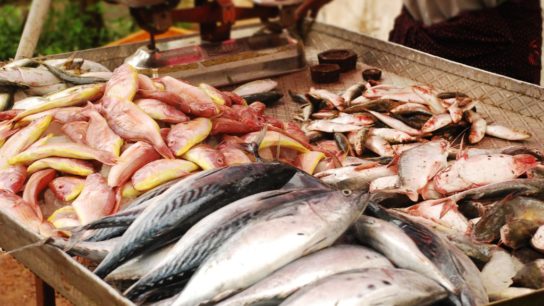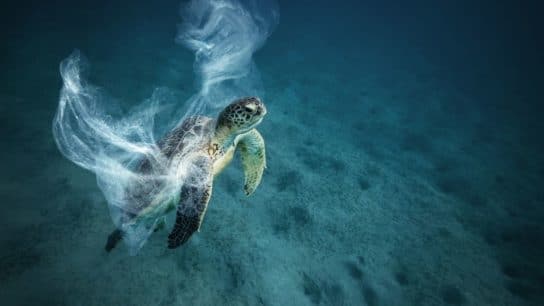This week, we headed into another meeting of the South Pacific Regional Fisheries Management Organisation (SPRFMO) with New Zealand – yet again – isolated from our allies and reneging on our international ocean commitments. It feels like a bad case of deep-sea déjà vu.
—
By Helen Clark
Last year, I was horrified at New Zealand’s position at SPRFMO, where we were roundly criticised by our usual Pacific and Pacific-rim allies for blocking a proposal to set a minimum level for the protection of vulnerable marine ecosystems (VMEs) – like seamounts – in the South Pacific.
As delegates gathered in Santiago, Chile, for the 2025 meeting this week, the picture didn’t look any better. In fact, now we need to add the shame of a New Zealand vessel being caught dredging up over twice the legal limit of protected coral while bottom trawling on seamounts in the international waters of the Tasman Sea.
New Zealand holds the dubious honor of being the only country still bottom trawling – for orange roughy – in the high seas of the South Pacific, a region that’s home to hundreds of seamounts, each one of them a unique, fragile biodiversity hotspot. Bottom trawling involves dragging hugely heavy nets across the seafloor: they destroy everything in their wake.
Seamounts and seamount chains are populated by long-lived coral and sponge species, they provide shelter and hunting grounds to species like sharks, whales and sea turtles, and play a key role in cycling nutrients throughout the ocean.
Every expedition to these underwater mountains discovers amazing new species, and a growing body of scientific evidence shows that these vulnerable ocean lifelines are in urgent need of protection, especially from destructive bottom trawling. So why does our Government still allow New Zealand-flagged bottom trawlers to fish in international waters where seamounts are known to exist?
By contrast, the host of this year’s SPRFMO meeting, Chile, has already acted to ban bottom trawling on all seamounts in its waters and is supporting similar in the high seas. Meanwhile, the global community, including the member States of North Atlantic regional fisheries management organisations (RFMOs), are moving at pace to protect seamounts and VMEs.
Most recently, Australia joined the growing global community of countries taking ocean leadership, announcing it is to hold a landmark science and knowledge symposium to map the extraordinary values of the Lord Howe Rise – South Tasman Sea. This announcement came at the same time as a New Zealand trawler was reported dredging up corals around the Lord Howe Rise in the same area. New Zealand is poised to become a Pacific pariah, and all for a couple of tonnes of orange roughy.
Our outlier position applies beyond the Pacific. New Zealand is one of only a handful of states worldwide who still permit bottom trawling on high seas seamounts. International commitments, including multiple UN General Assembly resolutions, promise to protect these ecosystems from destructive bottom trawling practices, yet over 20 years have passed without action to secure full protection for VMEs, including seamounts, from destructive bottom trawling practices. The Third World Ocean Assessment identifies destructive bottom trawling as the single greatest threat to deep-sea ecosystems, including seamounts. How much more science do we need?
Many governments are taking steps towards recognizing the threat bottom trawling poses to seamount ecosystems and ensuring their protection – it is well past time New Zealand joined them. With the third UN Ocean Conference in June, preparatory meetings for the entry into force of the high seas treaty in April and August, and the IUCN World Conservation Congress in October, 2025 promises to be pivotal for ocean protection. SPRFMO could lead the way towards delivering on international commitments and provide the first, foundational step in a year of action for our ocean, but that can only happen if New Zealand joins global leaders.
New Zealand was instrumental in setting up SPRFMO and we still host the secretariat. Our Government needs to stop tarnishing our global reputation to pander to a handful of renegade bottom trawling companies. It must catch up with fellow SPRFMO Member States – including our closest allies and trading partners – and finally protect seamounts on the high seas from bottom trawling.
Featured image: Dugornay Olivier.
—
About the author: Rt Hon Helen Clark is the former prime minister of New Zealand, and former administrator of the United Nations Development Programme (UNDP).
This story is funded by readers like you
Our non-profit newsroom provides climate coverage free of charge and advertising. Your one-off or monthly donations play a crucial role in supporting our operations, expanding our reach, and maintaining our editorial independence.
About EO | Mission Statement | Impact & Reach | Write for us














